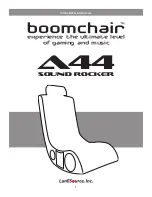
86
Appendix C: Host PC Software Installation Under Windows Vista
¤
2005-2010 SR Research Ltd.
12.
Appendix C: Host PC Software Installation Under Windows Vista
Please follow the instructions here to install the Host software in conjunction with Windows
Vista.
IMPORTANT: Before proceeding with the EyeLink 1000 Host software
installation ensure you have backed up all important data on your Host PC.
A new Windows Vista installation is required and this WILL erase everything
on the hard drive. We do not have the ability to separately create the Host
partition with an already existing Vista installation.
WARNING: ALL DATA ON THE DISK WILL BE ERASED
Due to the nature of Windows Vista’s boot loader, a full installation of Windows Vista must be
performed. This means that the hard drive will be formatted and any information on the hard
drive will be erased.
We will first format the hard drive using ROM-DOS and create a FAT32 partition for the
EyeLink Host software. Next, Windows Vista will be installed on the unused portion of the
drive. Finally, under Vista, we will configure the boot loader so that the system can be booted
into either ROM-DOS or Windows Vista.
You will require:
x
a ROM-DOS Boot CD (supplied with your EyeLink or disk image available via
[email protected])
x
a copy of your EyeLink 1000 CD-ROM (or “EyeLink CL” CD-ROM) containing the Host
PC application software and your .SCD file (supplied with your EyeLink)
x
a copy of your Vista installation disk and Vista License
12.1
Formatting the Hard Drive under ROM-DOS
The first step in preparing your Host PC for the EyeLink 1000 and Vista is to format your hard
drive using the ROM-DOS operating system, and creating a partition for the EyeLink Host
software.
1. Boot the computer with the ROM-DOS Boot CD. If you are using a Dell computer, place
the CD in the CD-ROM drive and press F12 for booting options, and boot from the
Internal or USB CD-ROM drive. For other motherboards and systems, you may need to
enter the BIOS and change the Boot Priority of the different drive components, in order
to make the CD-ROM have the highest boot priority.
2. At the command line prompt type "FDISK" without quotes.
3. While running FDISK:
i.
type 'A' and delete all partitions


































